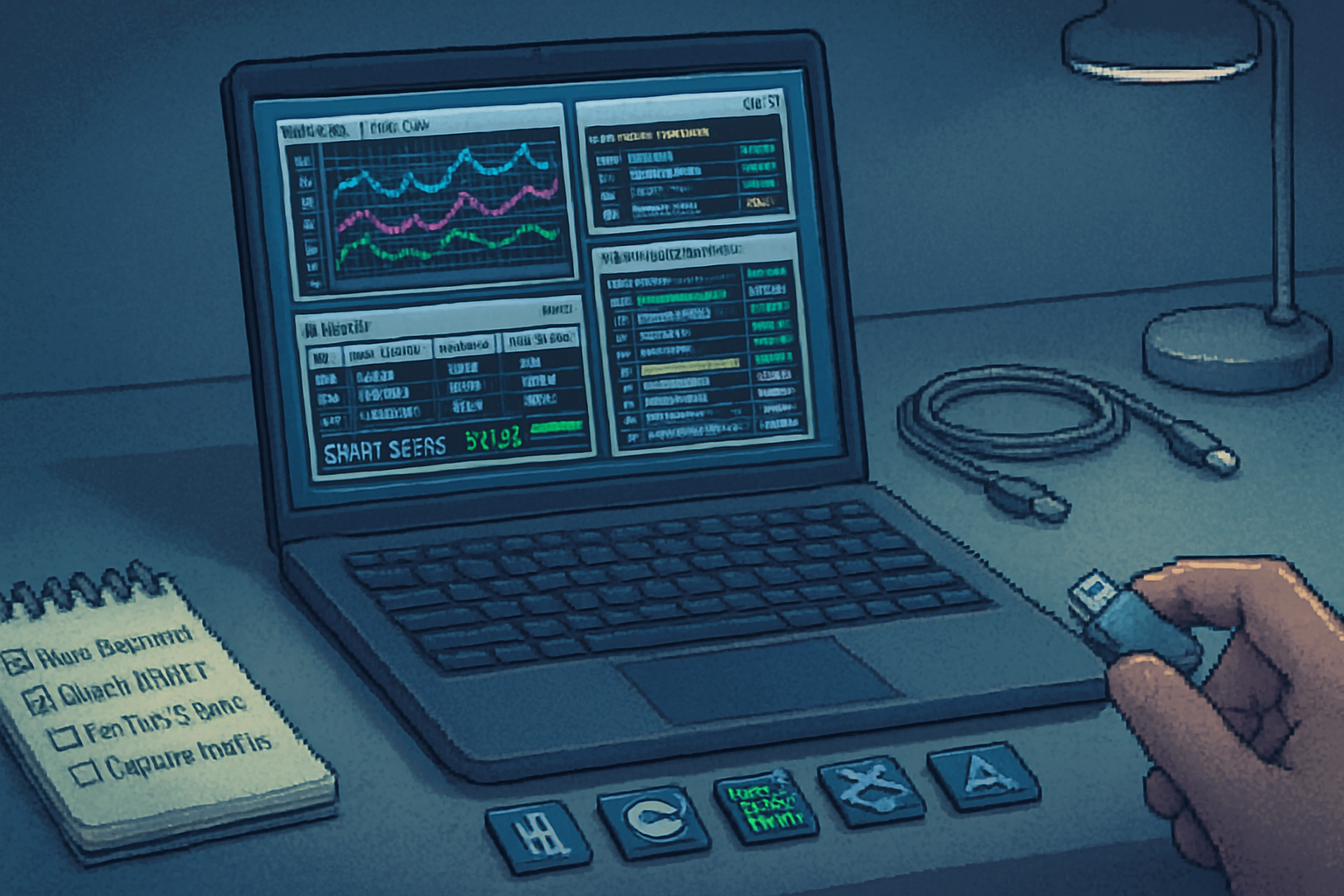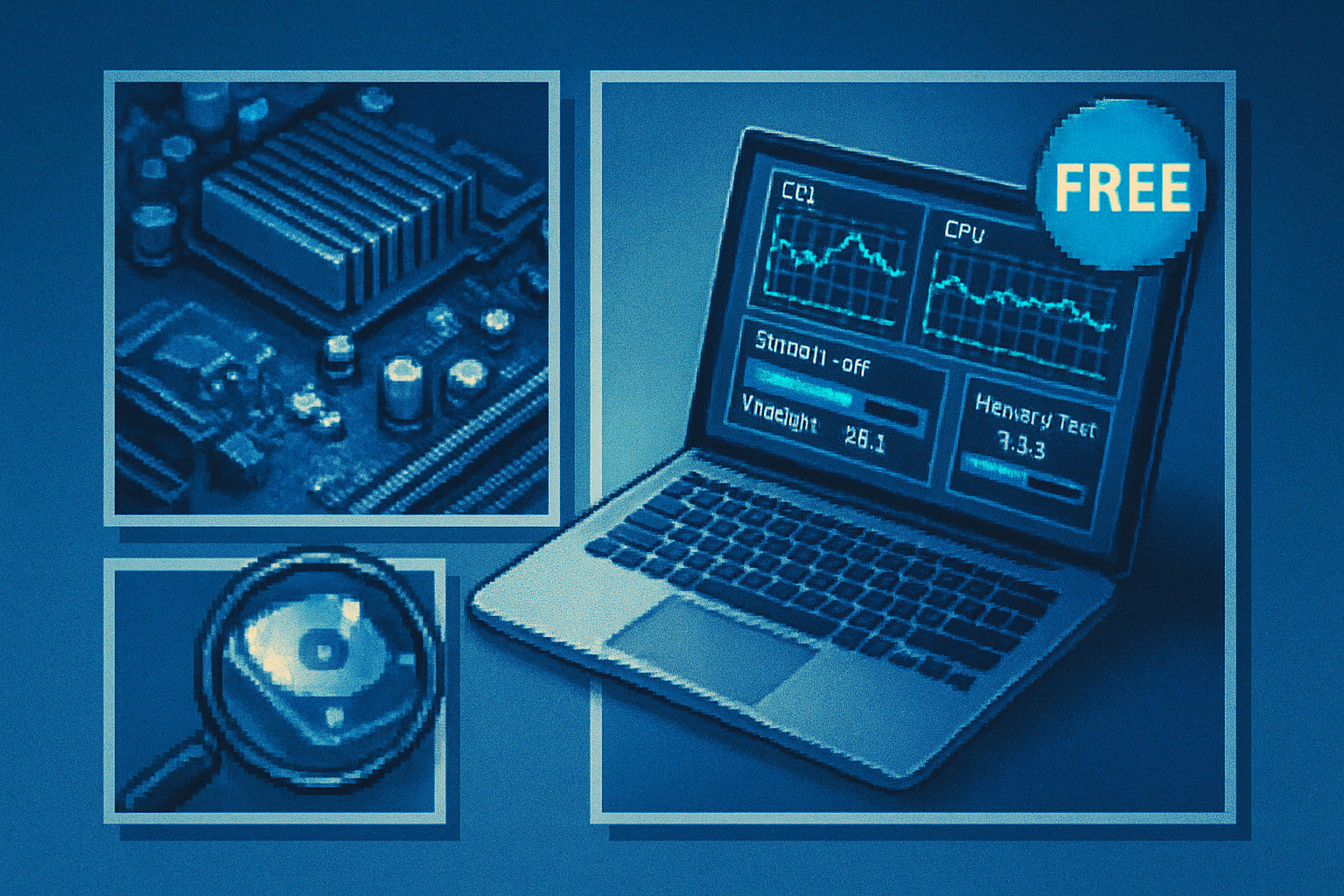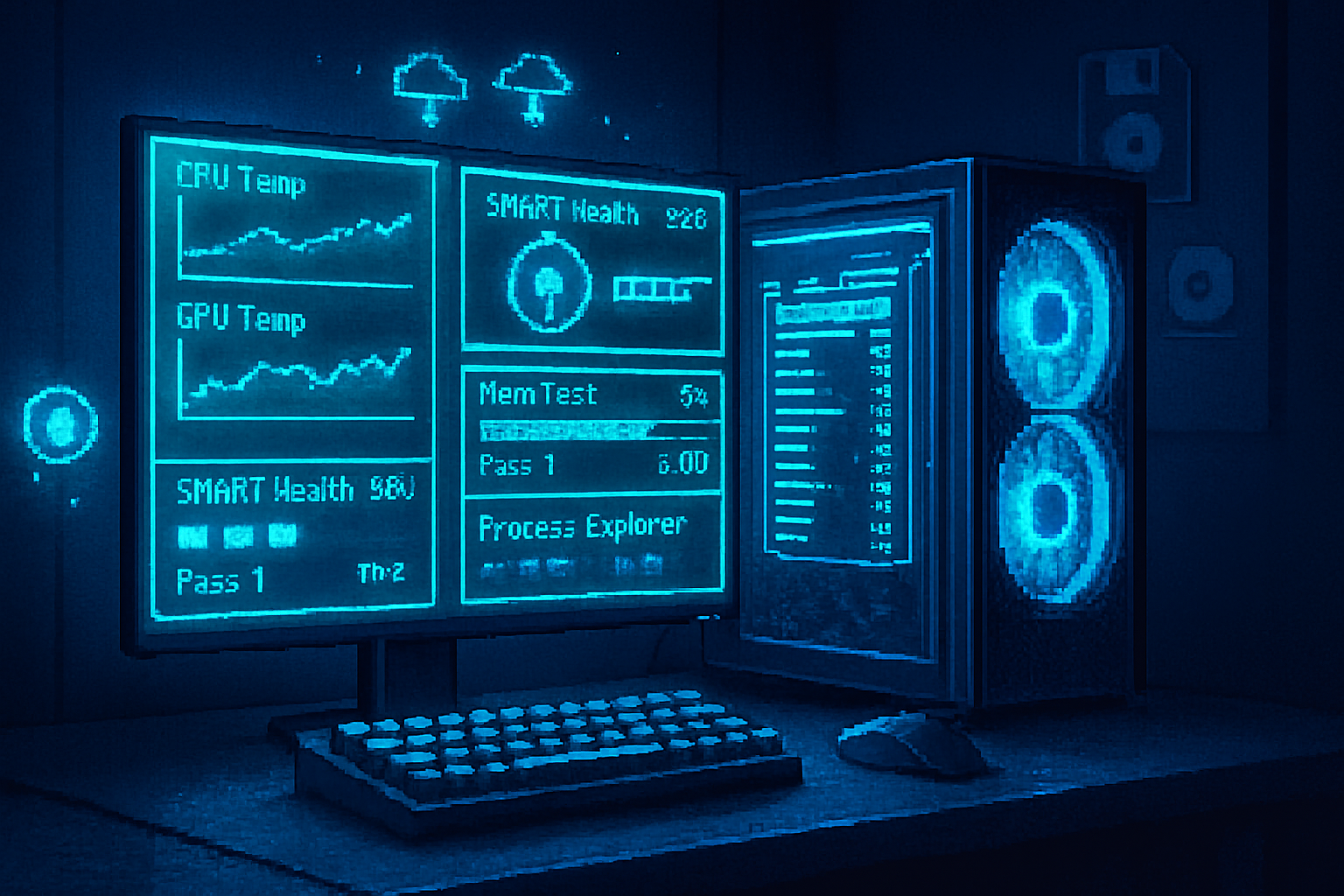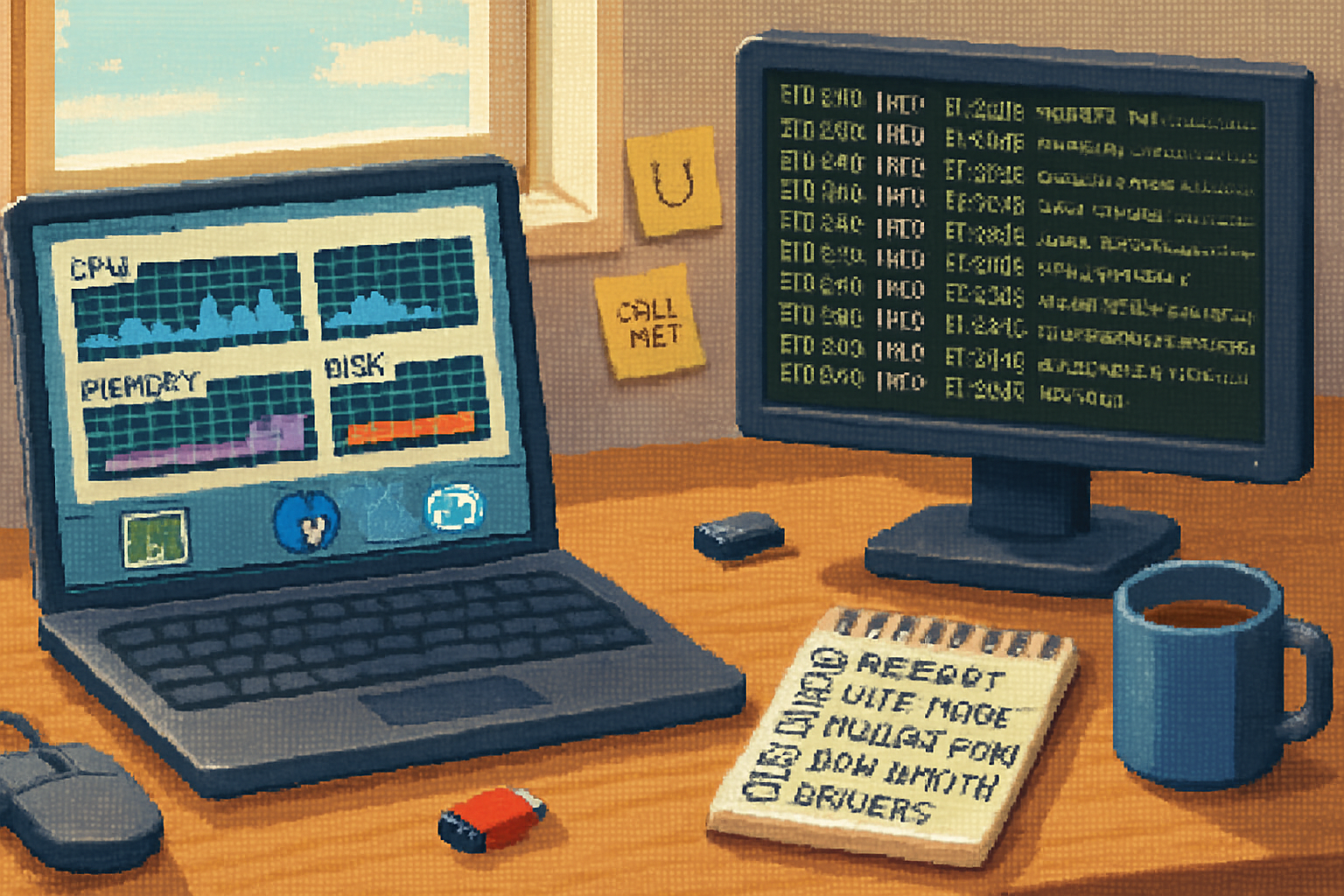· 7 min read
Expert Roundup: Tech Professionals Share Their Favorite Free Diagnostic Tools
A curated roundup of trusted, free PC diagnostic tools recommended by tech professionals, with practical tips and step-by-step usage guidance to diagnose hardware and software problems effectively.

Why this roundup matters
When a PC becomes sluggish, crashes, or behaves unpredictably, the first step is not to panic-it’s to diagnose. We asked experienced tech professionals (system admins, desktop engineers, hardware technicians and security analysts) which free tools they rely on and how they use them. Below you’ll find their recommendations, practical tips for safe use, and quick workflows you can follow.
How to read this roundup
- Tools are grouped by purpose - system integrity, storage, memory, CPU/GPU/temps, processes & drivers, networking, and crash analysis.
- Each entry includes - what it does, why an expert recommends it, quick usage tips, and cautions.
System integrity and Windows built-ins
SFC (System File Checker) and DISM
What - SFC checks and repairs corrupted Windows system files. DISM repairs the Windows image that SFC uses as a source.
Why experts use it - Fast first step for unexplained system errors or when Windows features fail.
How to run (as Administrator):
sfc /scannow DISM /Online /Cleanup-Image /RestoreHealthTip - Run SFC first; if it reports problems it cannot fix, run DISM then SFC again.
Caution - These are safe, but they can be slow on older drives. Don’t interrupt the process.
Reference - Microsoft documentation for SFC and DISM:
Event Viewer and Reliability Monitor
- What - Built-in logs (Event Viewer) and a user-friendly timeline (Reliability Monitor) for errors, warnings and application failures.
- Why experts use it - To identify patterns and timestamps that correlate with user-reported issues.
- Tips:
- Open Event Viewer and filter by critical and error events around the time of a crash.
- Use Reliability Monitor (type “View reliability history” in Windows search) for a quick visual of when problems began.
- Reference - Event Viewer overview:
Disk health and performance
CrystalDiskInfo (SMART reader)
- What - Reads SMART attributes and shows drive health status (Good, Caution, Bad).
- Why recommended - Easy and quick way to check for early signs of drive failure (reallocated sectors, pending sectors, spin-up issues).
- Usage tips:
- Look specifically at Reallocated_Sector_Count, Current_Pending_Sector, and Uncorrectable_Sector_Count.
- Run after symptoms like odd noises, slow access, or repeated file corruption.
- Caution - SMART detects many, but not all, failure modes-back up data immediately on any caution/bad result.
- Download: https://crystalmark.info/en/software/crystaldiskinfo/
CrystalDiskMark (throughput benchmark)
- What - Simple read/write benchmark for HDDs and SSDs.
- Why recommended - Helps verify if a drive is performing to expected speeds; useful to compare against manufacturer specs.
- Tips:
- Use only briefly and avoid in-production heavy I/O systems; benchmarking can stress SSDs and trigger thermal throttling.
- Compare sequential and random (4K) results to typical values for your drive type.
- Download: https://crystalmark.info/en/software/crystaldiskmark/
Manufacturer diagnostics
- Why - For drive certainties, run vendor tools (Seagate SeaTools, Western Digital Data Lifeguard Diagnostics) to run their full SMART and firmware-specific tests.
- Links:
- Seagate SeaTools: https://www.seagate.com/support/downloads/seatools/
- WD Data Lifeguard: https://support.wdc.com/downloads.aspx
Memory testing
MemTest86 (bootable memory tester)
- What - Bootable RAM tester that runs stress patterns across physical memory to detect faults.
- Why experts use it - Memory errors are a common root cause of blue screens, file corruption, and unpredictable application crashes.
- How to use:
- Create a bootable USB using MemTest86’s image.
- Boot the affected PC from the USB and let it run at least one full pass (overnight recommended). Multiple passes provide higher confidence.
- Caution - MemTest86 requires a reboot and runs outside Windows. Save work first.
- Download: https://www.memtest86.com/
CPU/GPU/temperature and sensors
HWiNFO and HWMonitor
- What - Comprehensive system sensor reporting (temperatures, voltages, fan speeds) and hardware details.
- Why recommended - To detect overheating, VRM issues, or throttling that explain unexpected slowdowns or shutdowns.
- Tips:
- Monitor temps during normal use and during a stress test to see behavior under load.
- Correlate high temperatures with the throttling or instability events in Reliability Monitor or Event Viewer.
- Links: https://www.hwinfo.com/ and https://www.cpuid.com/softwares/hwmonitor.html
Stress tests (use with care)
- Examples - Cinebench (CPU), Unigine/3DMark/Heaven or FurMark (GPU stress).
- Expert caution - Stress tests generate heat and power draw. Monitor temps closely and stop the test immediately if temperatures climb dangerously or if system becomes unstable.
Processes, drivers and startup
Process Explorer and Autoruns (Microsoft Sysinternals)
- What - Process Explorer is an advanced Task Manager replacement (shows process trees, handles, loaded DLLs). Autoruns shows everything that starts automatically.
- Why experts use them - Identify runaway processes, hidden background programs, DLLs keeping files locked, and unwanted startup items.
- Tips:
- Use Process Explorer to find which process holds a file lock (Find -> Find Handle or DLL…).
- Use Autoruns to disable suspicious startup entries (but backup your configuration first).
- Download from Microsoft: https://learn.microsoft.com/sysinternals/
Process Hacker (alternative)
- What - Another advanced process viewer with more features for memory inspection and services.
- Caution - Some AV systems flag it-use from the official source and only when needed.
Crash analysis
BlueScreenView and WhoCrashed
- What - Small utilities that read Windows crash dump files and provide human-readable summaries.
- Why - Fast first pass to determine if a crash points to a driver, system file, or hardware.
- Tips:
- After a BSOD, check the most recent dump and look for module names (e.g., a .sys file) as a lead.
- Combine with Event Viewer findings and driver version checks.
- Links - BlueScreenView:
Network troubleshooting
Wireshark (packet capture)
- What - Industry-standard packet capture and analysis tool for deep network troubleshooting.
- Why experts use it - To inspect traffic patterns, retransmissions, latency, and protocol anomalies when diagnosing network application issues.
- Tips:
- Learn basic filters (e.g., ip.addr == 192.0.2.1) to reduce noise.
- Capture during the event and correlate timestamps with the application failure.
- Caution - Packet captures can contain sensitive data-handle and store captures securely.
- Download: https://www.wireshark.org/
PingPlotter, TCPView and iperf
- Useful for visual latency tracing (PingPlotter), live TCP/UDP connection inspection (TCPView from Sysinternals), and bandwidth/throughput testing (iperf).
Security scanning
Malwarebytes (free scanner) and Windows Defender offline scan
- What - Malware scanners can catch malware that causes instability or unexpected behavior.
- Tips:
- Use an offline scan when infection is suspected.
- Combine with autoruns and process inspection to find persistence mechanisms.
Quick diagnostic workflows recommended by experts
- Sluggish PC / high CPU or disk usage
- Run Task Manager > sort by CPU/Disk to identify culprit.
- Use Process Explorer to inspect the process (handles, network, DLLs).
- Check Event Viewer for errors at the same time.
- Run a quick malware scan.
- Random crashes or blue screens
- Check Reliability Monitor and Event Viewer for related events.
- Run WhoCrashed/BlueScreenView to inspect dump files.
- Run MemTest86 overnight and run a drive SMART test (CrystalDiskInfo).
- Update or roll back drivers if a specific driver module is implicated.
- Slow storage or intermittent file errors
- Check SMART attributes with CrystalDiskInfo.
- Run manufacturer diagnostics (SeaTools, WD Lifeguard).
- Run CrystalDiskMark to compare speed against expected performance.
- Overheating or sudden shutdowns
- Monitor temps with HWiNFO; run stress test briefly while watching sensors.
- Clean dust, verify fan curves, and re-seat thermal pads or paste if comfortable.
Interpreting common SMART attributes (practical notes)
- Reallocated_Sector_Count - Non-zero values indicate the drive remapped bad sectors-back up immediately.
- Current_Pending_Sector - Sectors pending reallocation; attempts to read/write may recover or confirm failure.
- Power_On_Hours and Load_Cycle_Count - Useful for understanding drive wear; high values may point to older drives needing replacement.
Best practices and safety tips from pros
- Always back up before attempting repairs that write to disk (CHKDSK, firmware updates, in-place repairs).
- Run tests one at a time-multiple simultaneous stress tests can confound results.
- Reproduce the issue while capturing logs (Event Viewer, packet captures, performance counters).
- Maintain a clean baseline - note normal temps, CPU/GPU utilization, and disk speeds so deviations are obvious.
- Keep critical drivers (chipset, storage controller, GPU) up to date from vendor pages.
A compact toolkit to keep on your USB stick
- MemTest86 boot image
- HWiNFO portable
- CrystalDiskInfo / CrystalDiskMark portable
- Sysinternals Suite (Process Explorer, Autoruns, TCPView)
- BlueScreenView, WhoCrashed
- Wireshark portable
- A small README with commands (SFC/DISM/CHKDSK) and links to vendor diagnostics
When to escalate to hardware replacement or professional repair
- Consistent SMART failures (reallocated sectors, growing pending sectors) despite attempts to repair = replace the drive.
- Reproducible memory errors across MemTest86 passes = replace RAM.
- Repeated thermal shutdowns after cleaning, reseating, and replacing thermal paste = investigate cooling system or faulty fan/VRM/PSU.
Further reading and downloads (official sources)
- Microsoft Sysinternals suite: https://learn.microsoft.com/sysinternals/
- CrystalDiskInfo / CrystalDiskMark: https://crystalmark.info/en/software/
- HWiNFO: https://www.hwinfo.com/
- HWMonitor / CPU-Z: https://www.cpuid.com/
- MemTest86: https://www.memtest86.com/
- Wireshark: https://www.wireshark.org/
- BlueScreenView (NirSoft): https://www.nirsoft.net/utils/blue_screen_view.html
- WhoCrashed: https://www.resplendence.com/whocrashed
Final note from the experts
Diagnostics are detective work: start with non-invasive, quick checks (logs, SMART, Task Manager) and escalate to bootable tests (MemTest86, vendor diagnostics) and stress tests only when needed. Keep a methodical log of what you tested and when-patterns often emerge that point to the true culprit.


